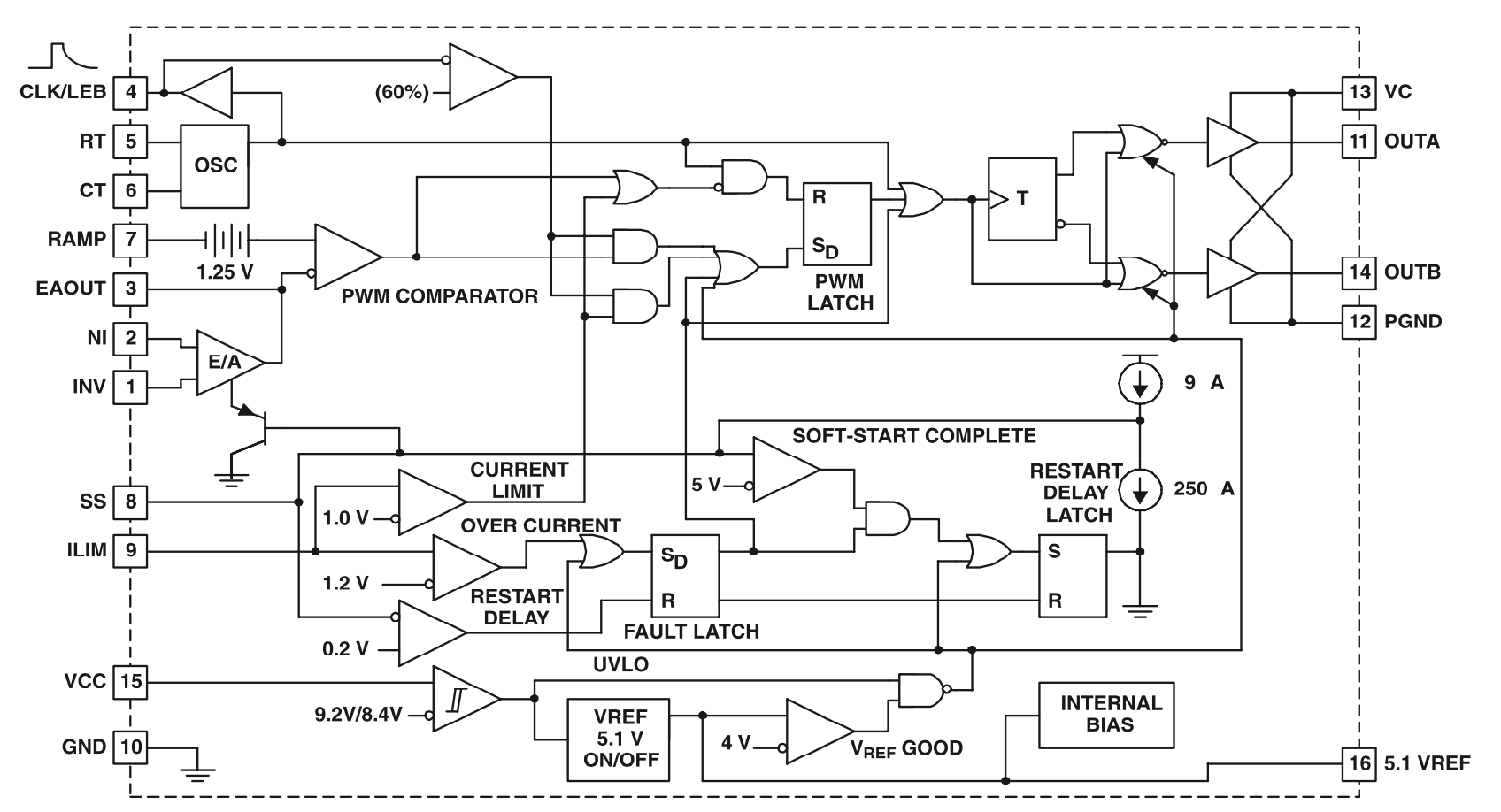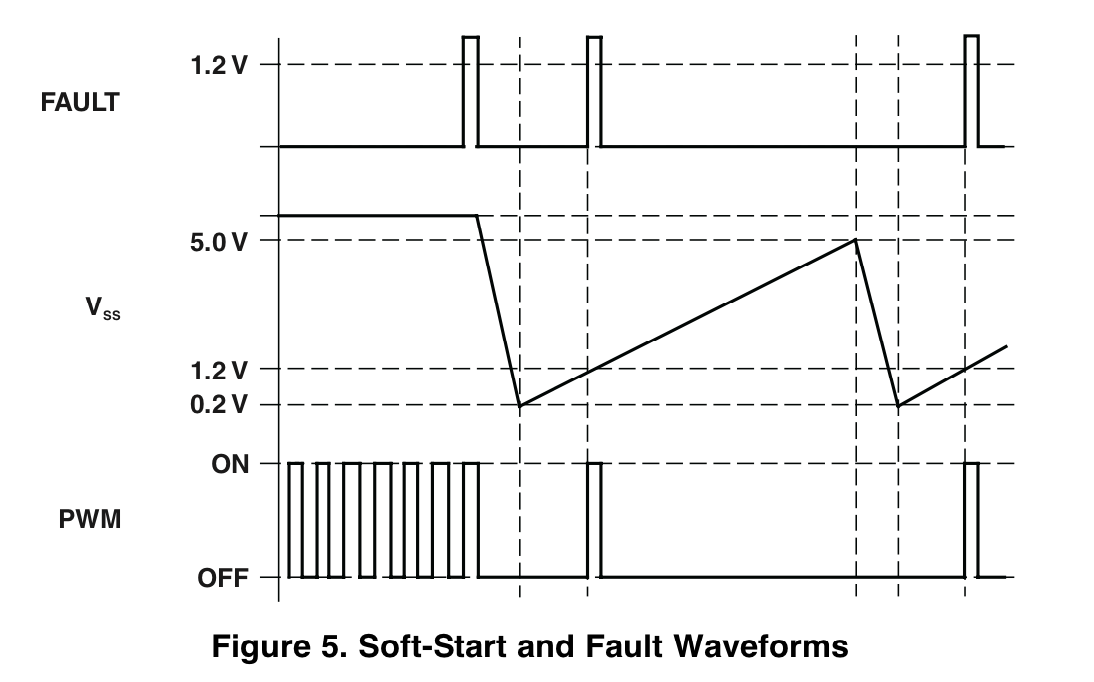UVLO, Soft Start, and Fault Management
Soft start is programmed by a capacitor on the SS pin. At power up, SS is discharged. When SS is low, the error amplifier output is also forced low. While the internal 9-μA source charges the SS pin, the error amplifier output follows until closed loop regulation takes over.
Anytime ILIM exceeds 1.2 V, the fault latch is set and the output pins are driven low. The soft-start capacitor is then discharged by a 250-μA current sink. No more output pulses are allowed until the soft-start capacitor is fully discharged and ILIM is below 1.2 V. At this time, the fault latch resets and the chip executes a soft start.
Should the fault latch get set during soft start, the outputs are immediately terminated, but the soft-start capacitor does not discharge until it has been fully charged first. This results in a controlled hiccup interval for continuous fault conditions.




































